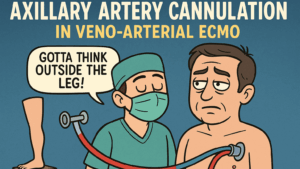Abstract
Background: In the state of Kentucky, many status asthmaticus (SA) patients require care in the Pediatric Intensive Care Unit (PICU) and a fraction of these patients may receive “rescue therapies” with inhaled volatile anesthetics (IVA) and/or Extracorporeal Membrane Oxygenation (ECMO). We present a series of such patients with the objective of comparing the clinical parameters of individual patients who received inhaled volatile anesthesia and subsequently the need for ECMO. Methods: Children between 2 and 18 years of age admitted to our PICU from January 2014 to July 2020 with SA were reviewed and categorized as 1) patients who received IVA alone, 2) patients who received IVA and then subsequently ECMO, and 3) patients on ECMO alone. Results: A total of 1772 children with SA episodes were identified with a mortality of 13 patients. Seven children with SA were identified who received either IVA, ECMO, or both. One patient received only IVA, 5 received both IVA and ECMO and one received only ECMO. All received standard asthma therapies of steroids, albuterol, magnesium sulphate, and aminophylline prior to escalation. Six out of seven refractory SA received IVA, and five (83%) of those were subsequently escalated to ECMO. There was an improvement in mean pH after cannulation compared to IVA. pCO2 levels had no improvement after IVA administration but decreased by an average of 20 points after ECMO. Patients peak inspiratory pressures decreased within the 1st 24 h of ECMO cannulation from a mean of 30 to 18. There were no other complications related to ECMO placement. Conclusion: While we cannot decisively draw any conclusions from our study due to the small sample, it was noted that there was no clear advantage of using IVA prior to ECMO in our patients. Most patients who received IVA were escalated to ECMO indicating that early ECMO cannulation may be beneficial. Given the high cost and potential complications of both, there is a need for the development of well-defined guidelines for severe SA management in the PICU.
Key words: ECMO / Status asthmaticus / Inhaled volatile anesthetics / Pediatrics







